Heritage turkeys are a great way to get a healthy, flavorful, and well-behaved bird. The best heritage turkeys have the ability to adapt to their surroundings, which means they’re going to be able to live in a wide variety of climates and environments.
For every type of turkey lover out there I give you 12 different breeds with features that make them unique from one another; breeding location (soil), colors (natural or processed), temperament, and meat quality.
Turkey breeders should take notes on these breeds and see which ones would work best for their farm!
Also, read: Turkey Farming for Beginners: A Complete Guide
12 Best Turkey Breeds Heritage: All you need to Know
1. Midget White Turkey

The Midget White Turkey is one of the top 10 heritage turkey breeds. It has been developed by J. Robert Smyth at the University of Massachusetts in the 1960s.
Midget Whites have a very high meat yield and low feed requirements, but they are still able to produce white meat due to their fat deposits under the skin.
Midget hens lay a large egg that can cause prolapse. In temperament, they are very calm-natured and early layers but go broody quickly. Midget hens tend to be fence jumpers due to their lightweight frames, so they need extra attention during the mating process.
2. White Holland Turkey
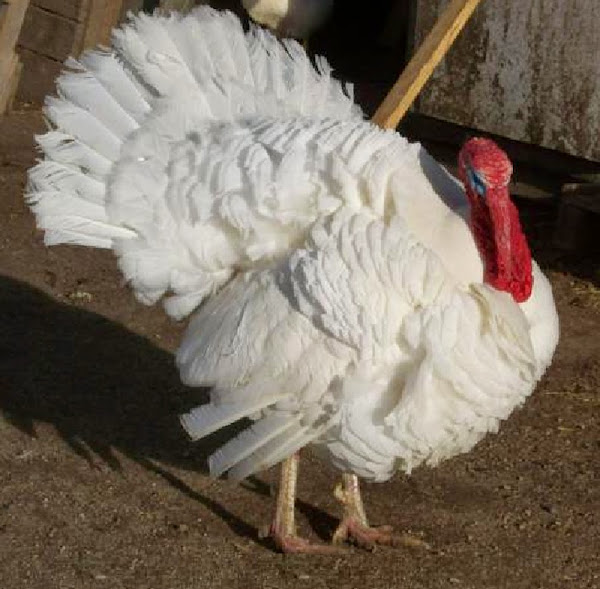
White Holland turkeys are the largest breed of turkey and can weigh up to 30 pounds. The hens will usually weigh in at around 16-17 pounds, which makes them perfect for families with children or a large number of guests.
White Holland turkeys are the oldest variety of turkeys that we raise. They have been grown since 1867 and they are the most popular type of turkey in America.
White Holland turkeys have a calm, friendly personality that makes them great for beginners. They are very good sitters and mothers but sometimes can break eggs due to the size of the hens.
3. Royal Palm Turkey
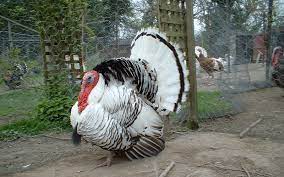
Royal Palm turkey is one of the best breeds for heritage turkeys. It can easily be distinguished from other breeds and it has a striking appearance that will make your dinner table stand out.
The Royal Palm is a type of turkey that originates from the Caribbean. It has an average weight for meat tom of 18 to 20 pounds and hens 10 to 14 pounds, with less filled out breasts than other turkeys at 6th tier. The APA recognized it in 1977 as "subspecies" of wild turkey.
Royal Palm Turkeys have many qualities that make them a good addition to any farm. They lay eggs and take care of their young ones well.
4. Bourbon Red Turkey
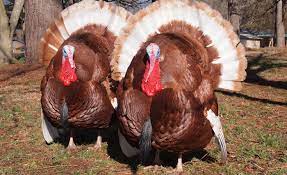
Bourbon Red turkeys are in the upper 20-pound range. They have a rich dark red, black and white plumage and come from some of the oldest breeds of turkey.
Bourbon Red Turkey is a breed of turkey with deep red meat. Their calm-natured personality makes them easy to handle, and they are recognized by the American Poultry Association in 1909.
Bourbon Red turkeys are often underfoot during feeding time. These birds can be good sitters and mothers, so you might want to consider buying these types of birds in the future if your home doesn't have room for more than one turkey at a time.
5. Standard Bronze Turkey
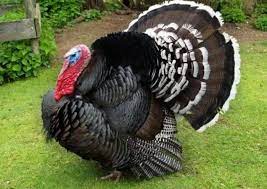
The Standard Bronze turkey is a type of heritage turkey. They are very large turkeys with toms in the mid-30-pound range and have an excellent reputation for their great taste and high-quality meat.
Standard bronze turkeys are a very old variety dating back to the 1800s. Their meat is darker and less clean than white-feathered turkey, but they make good layers. Breeds of heritage turkeys have their own strengths and weaknesses as well.
When it comes to choosing a turkey, you should consider the breed and what kind of breeder or grower is most important for your type of event. There's also a wide variety of options in terms.
6. Slate Turkey
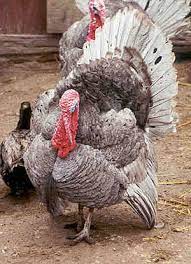
Slate turkey breeds have a variable temperament. They are not as aggressive or nervous as other types of turkeys, but they can be difficult to manage and require more space than many smaller breeds.
Slate Turkey has a distinctive slate coloration, which can be recognized by the dark plumage on its head and neck. Slate Turkeys have meat with less fat than other types of turkey because they live in colder climates where food sources are scarce.
7. Narragansett Turkey
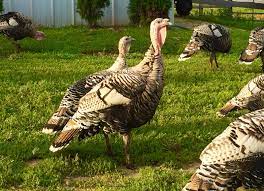
This breed of turkey was developed in the United States and is a large bird that was favored for meat production. This breed has been around since 1620, and its many traits make it very popular with people who want to raise turkeys.
The Narragansett Turkey is a breed of domestic turkey that was developed in Rhode Island. It originated from crosses of wild turkeys and domestic turkeys brought from Europe, specifically Belgium.
The Bronze standard refers to the color this variety has when it reaches maturity at 18 months old with its feathers bordered by bronze-colored skin on both sides (the lighter side) of the neck, back thighs, and wings.
The Narragansett is an all-American breed, originating from Rhode Island. This turkey has a calm temperament and good egg production with fine flavored meat that can be found less in some breeds.
They are active foragers and somewhat flighty, making them great for newbies who have never raised turkeys before!
Broody but good mothers are not uncommon in Narragansett turkeys. It is a common trait among the breed, which has been around since 1886.
The hens tend to get broody during the winter months when they have fewer eggs produced and less time to sit on them because of lower temperatures outside.
8. Chocolate Turkey
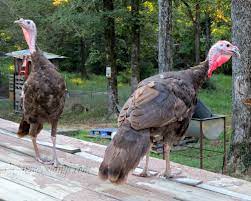
Turkey breeds have been around for centuries. Today, many consumers are looking to buy heritage turkeys that will give them the best-tasting meat at a reasonable price.
A large breed of bird, chocolate turkey is known for its tasty meat and clean feathers. In addition, the temperament of a turkey is variable. The meat will not be as good or worse than other turkeys depending on how they are raised and their genetics.
9. Black Turkey
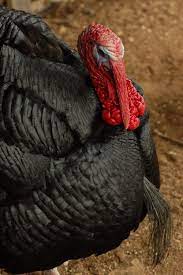
Black turkeys are black with a greenish sheen. They have medium to large sizes and are mostly used like meat on the table. Black turkeys can be found in some heritage breeds, but they aren't limited to these breeds.
The black turkey is a fast-growing, good meat production bird. However, it doesn't dress out as clean due to its dark feathers and can be temperamental because of this trait.
10. Auburn Turkey
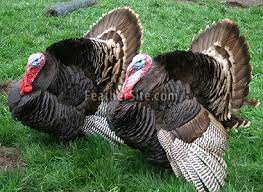
Auburn Turkey is the most popular turkey used for consumption. Broad Breasted White turkeys are the most popular, too, but they can be expensive. Other heritage breeds are Bronze Iron Gray and Narragansett Red.
Auburn turkey was a popular breed for home-cooked turkeys in the 1950s, but demand declined due to Broad Breasted White production. Their temperament is variable
11. Beltsville Small White Turkey

The Beltsville Small White Turkey is a heritage turkey breed that will not cost you your wallet. These birds are roughly the same size as Midget Whites, but with wider breasts.
Beltsville developed a small white turkey in the 1930s. These birds are good sitters and produce eggs well, which is valuable for commercial egg production.
They also have reproductive qualities that include natural mating ability. This turkey is medium to large in size and has a dark-colored plumage. It also has a narrow breast.
12. Buff Turkey
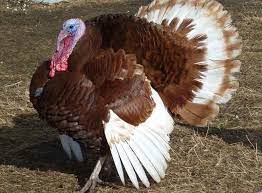
Buff Turkey was created in 1874 and used to develop the Bourbon Red. Interest grew again in creating a buff-colored turkey with the hope of reviving this historic variety. The Jersey Buff is a type of turkey that has been bred to be calm, so they do not have as much aggression.
Buff Turkey is ideal for hobby farms or small-scale operations. This breed of turkey has an easy to work with temperament and a great taste, which makes them perfect for the table.
Best turkey breed for meat
The Broad Breasted White turkey is a popular breed of turkey for meat and can be raised on pasture. They are known for their meat quality, as they take 16 weeks to reach butchering weight.
The heritage turkey breeds are a fantastic way to get meat for your family without breaking the bank. The birds have been bred from native American game fowls and early English turkeys, which makes them perfect for both fresh and frozen meals.
They're also known as friendly poultry, so they'll be easy to handle in the kitchen and won't need any special accommodations when you go on holiday with them!
If you have the space or budget, raising your own turkeys is an option that some people choose because it gives them more control over what goes into the food they eat. In addition, there are many breeds to choose from when deciding which type of turkey suits your needs best.
Wild turkey breed in the US
Eastern Wild Turkey
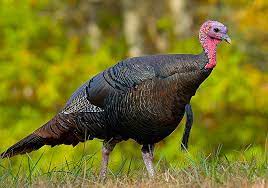
The eastern wild turkey is the most predominant North American subspecies and it's a great choice if you're looking for heritage turkeys that won't cost too much.
The Eastern Wild turkey is one of the largest turkeys in North America. They have chestnut or chocolate brown-tipped tail feathers which extend into their iconic long neck and head that are bright red on top with dark blue iridescence below.
The eastern wild turkey is a large bird that has distinctive head colorations. They are primarily red, blue, or white in color with the males having more extensive feathering on their heads and necks than the females do.
This variety of diet allows them to be found from sea level up to 11,000 feet above sea level where they can eat most types of vegetation and feed off insects such as ants and beetles.
Osceola Wild Turkey
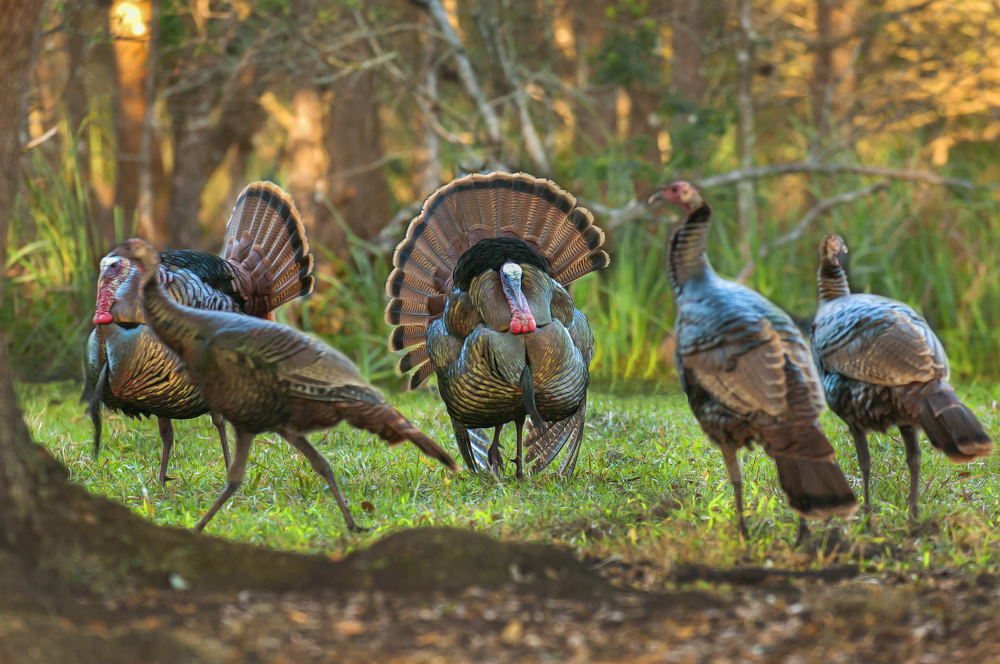
Osceola Wild Turkey is one of the smallest habitation region and subspecies populations on this list. It is also known as Florida turkey or wild peninsular turkey.
The Osceola Wild Turkey is a Florida wild turkey that lives in the Florida peninsula. This bird can only be found on or near the border of Polk and Highlands counties, which are located at either end of the peninsular state.
The small size allows it to easily hide from predators such as bears, coyotes, and bobcats due to its camouflage abilities.
Osceola wild turkeys are 3 to 3.5 feet tall and weigh 20 pounds, with a diet consisting of grapes, blackberries, beechnut acorns, grains such as corn and oats insects like grasshoppers and beetles
Rio Grande Wild Turkey
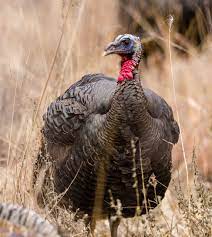
The Rio Grande wild turkey is native to the central plains of the US. The birds are versatile and easy-to-raise birds, but they can be expensive because they require a lot of space and specialized care.
The Rio Grande Wild Turkey is estimated to have a population of between 1 and 1.3 million birds, making it the most populous subspecies in North America. It was first named by George B. Sennett in 1879 and this turkey’s diet resembles that of other turkeys found throughout North America
Rio Grande wild turkeys are native to the Rio Grande Valley in Texas. They eat chokecherries, bearberries, grains like corn, oats, and wheat. It also eats small arthropods such as grasshoppers spiders and beetles because of its habitat where these foods can be found easily throughout the year.
Merriam's Wild Turkey
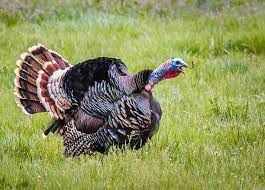
Merriam's wild turkeys are found primarily in the western, ponderosa pine-laden mountain regions, but they also live in the Great Basin and California. They're a relatively small turkey breed that can be raised on pastureland or by simply letting them roam free.
Merriam's Wild Turkey is a type of wild turkey found in the United States. The population estimate for Merriam is around 325,000 to 350,000 and it can be easily distinguished from other turkeys with its unique head coloration and sheen on the body feathers.
Merriam's diet consists of plants and arthropods. It is a migratory bird, which means it spends the winter in Central America before migrating back to North America during springtime.
Gould's Wild Turkey

Gould's wild turkey is one of the 10 best heritage turkey breeds in the US. It was first named and described as a subspecies by John Gould in 1837, which put it under the foundation for recognition.
Gould's Wild Turkey is the largest of five North American subspecies. This bird has been greatly understudied and recognized, considering there are only 5 subspecies in North America.
Gould's wild turkey is a distinctive bird because of its white tips on the tail feathers, copper and greenish-golden reflections on the lower back, and elongated legs. The range for Gould's wild turkeys is limited to Arizona, New Mexico, and northern Mexico only.
Some birds in the wild can be aggressive, especially during mating season. To avoid these aggressive behaviors from your backyard bird-feeder, only feed them peanuts and seeds that are safe for the wildlife near you.
What is the largest heritage turkey breed?
The Bronze standard Turkey is the largest species of heritage turkey. If you're looking for a heritage turkey breed, then this may be a perfect match for your needs. Bronze turkeys are one of the biggest breeds of heritage turkeys and the most popular turkey variation in American history. Bronzes were initially a cross between the European-introduced turkeys and the natural wild turkeys discovered in America.
Conclusion
Heritage turkeys may be kept as breeding stock all year, allowing you to grow your own meat birds each year. In the spring, they only deposit a few eggs over a brief period of time. To encourage turkey hens to continue laying, place the eggs beneath a broody chicken hen or in an incubator.
Heritage turkeys are more inclined to fly short distances to escape enclosures, so give them plenty of room and cut the flying feathers on one wing to help keep them in check.
In general, turkeys require a higher protein feed than chickens, so make sure you have the necessary feed before ordering poults.
Need a website or other IT services? Visit our website!
Share on Twitter Share on Facebook
Comments
Comment awaiting approval 2 years, 9 months ago
Comment awaiting approval 2 years, 9 months ago
New Comment